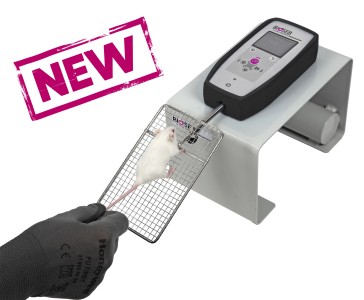Authors
T T Sabblah, S Nandini, A P Ledray, J Pasos, J L Conley Calderon, R Love, L E King, S J King
Lab
Burnett School of Biomedical Sciences, College of Medicine, University of Central Florida, Orlando, FL, USA
Journal
Scientific Reports
Abstract
Charcot-Marie-Tooth disease (CMT) is a peripheral neuromuscular disorder in which axonal degeneration causes progressive loss of motor and sensory nerve function. The loss of motor nerve function leads to distal muscle weakness and atrophy, resulting in gait problems and difficulties with walking, running, and balance. A mutation in the cytoplasmic dynein heavy chain (DHC) gene was discovered to cause an autosomal dominant form of the disease designated Charcot-Marie-Tooth type 2_O disease (CMT2O) in 2011. The mutation is a single amino acid change of histidine into arginine at amino acid 306 (H306R) in DHC. In order to understand the onset and progression of CMT2, we generated a knock-in mouse carrying the corresponding CMT2O mutation (H304R/+). We examined H304R/+ mouse cohorts in a 12-month longitudinal study of grip strength, tail suspension, and rotarod assays. H304R/+ mice displayed distal muscle weakness and loss of motor coordination phenotypes consistent with those of individuals with CMT2. Analysis of the gastrocnemius of H304R/+ male mice showed prominent defects in neuromuscular junction (NMJ) morphology including reduced size, branching, and complexity. Based on these results, the H304R/+ mouse will be an important model for uncovering functions of dynein in complex organisms, especially related to CMT onset and progression.
BIOSEB Instruments Used
Grip strength test (BIO-GS3)
Source :

 Pain - Thermal Allodynia / Hyperalgesia
Pain - Thermal Allodynia / Hyperalgesia Pain - Spontaneous Pain - Postural Deficit
Pain - Spontaneous Pain - Postural Deficit Pain - Mechanical Allodynia / Hyperalgesia
Pain - Mechanical Allodynia / Hyperalgesia Learning/Memory - Attention - Addiction
Learning/Memory - Attention - Addiction Physiology & Respiratory Research
Physiology & Respiratory Research











![Dynamic Weight Bearing 2.0 – Postural Module [Add-on]](https://bioseb.com/733-home_default/dynamic-weight-bearing-20-add-on-postural-module.jpg)
























 Pain
Pain Central Nervous System (CNS)
Central Nervous System (CNS) Neurodegeneration
Neurodegeneration Sensory system
Sensory system Motor control
Motor control Mood Disorders
Mood Disorders Other disorders
Other disorders Muscular system
Muscular system Joints
Joints Metabolism
Metabolism Cross-disciplinary subjects
Cross-disciplinary subjects CONFERENCES & MEETINGS
CONFERENCES & MEETINGS 